Weeping willow trees are iconic landscape features, known for their graceful, drooping branches that create a serene, peaceful atmosphere.
These majestic trees can transform any outdoor space into a tranquil retreat.
If you’re considering adding a weeping willow to your landscape or looking for ways to enhance an existing one, here are 10 stunning landscaping ideas to inspire you:
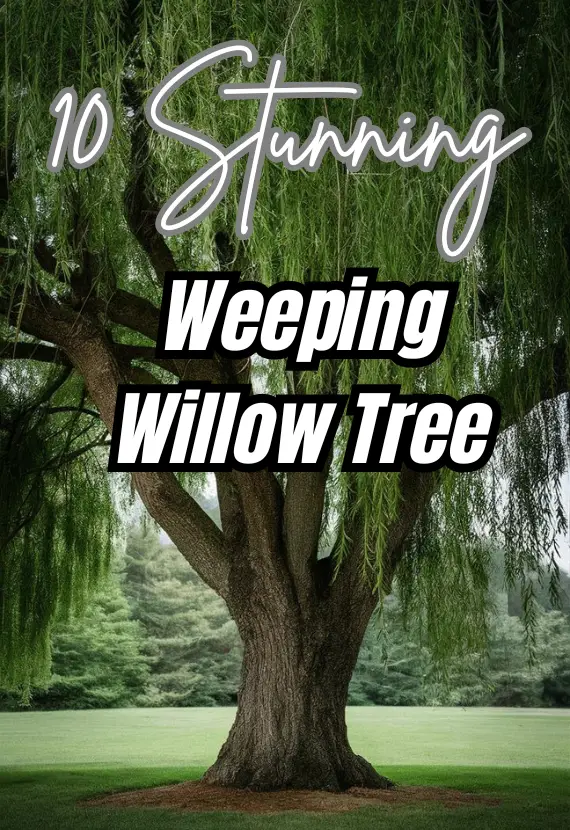
Key Takeaways:
- Versatility: Weeping willows are incredibly versatile in landscaping, suitable for various themes from classic waterside plantings to modern zen gardens.
- Natural Structures: These trees can be used to create living structures like gazebos, arbors, and children’s play areas.
- Wildlife-Friendly: Weeping willows naturally attract and support local wildlife, making them excellent choices for nature enthusiasts.
- Year-Round Interest: With proper planning, weeping willows can be focal points in all four seasons.
- Nighttime Appeal: These trees can be stunning features in evening gardens, especially when combined with appropriate lighting and moonlight-reflecting plants.
- Artistic Inspiration: The graceful form of weeping willows can inspire creativity, making them ideal centerpieces for artistic retreats.
- Proper Care: Regular watering, pruning, and fertilizing are crucial for maintaining the health and beauty of weeping willows.
- Root Consideration: Be mindful of the tree’s aggressive root system when planning its location in your landscape.
- Patience Pays Off: While weeping willows grow relatively quickly, it takes time for them to reach their full, majestic potential.
- Transformative Power: A well-placed and well-maintained weeping willow can dramatically transform an outdoor space, creating a serene and romantic atmosphere.
1. Waterside Wonder

One of the most classic and breathtaking ways to showcase a weeping willow is by planting it near water. Weeping willows naturally thrive in moist environments, making them perfect companions for ponds, lakes, or streams. The sight of long, cascading branches reflected in still water creates a mesmerizing effect that can turn any waterfront into a picturesque scene.
Landscaping tip: Plant your weeping willow about 10-15 feet away from the water’s edge to allow room for root growth without compromising the shoreline. Surround the base with moisture-loving plants like irises, hostas, or ferns to create a lush, layered look.
2. Living Gazebo
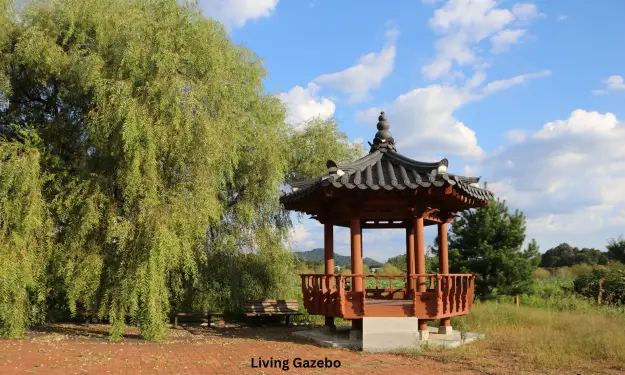
Transform your weeping willow into a natural, living gazebo for a unique outdoor seating area. As the tree matures and its branches grow longer, they’ll create a dome-like canopy that provides shade and privacy.
Landscaping tip: Place a circular bench around the trunk of the tree, or arrange comfortable outdoor seating beneath the canopy. Add soft lighting, such as string lights or lanterns, to create a magical ambiance for evening relaxation or entertainment.
3. Zen Garden Centerpiece
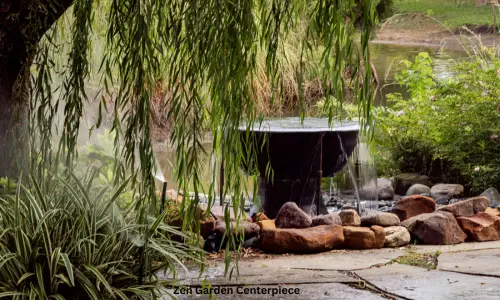
Incorporate a weeping willow as the focal point of a zen-inspired garden. The tree’s flowing form embodies the principles of movement and harmony central to Japanese garden design.
Landscaping tip: Surround the willow with a bed of raked gravel or sand to represent water. Add carefully placed rocks and boulders to create visual interest and balance. Include traditional Japanese plants like bamboo, Japanese maples, or moss to complete the zen aesthetic.
4. Romantic Arbor
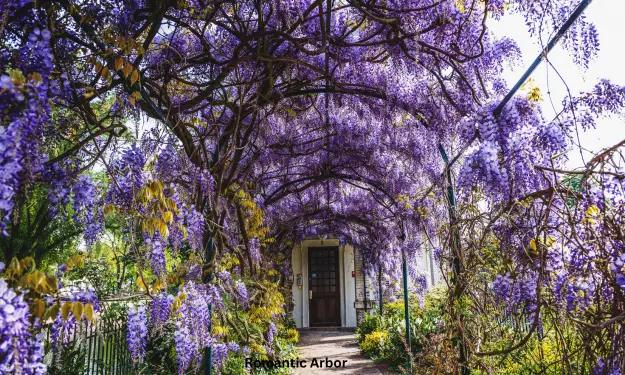
Create a stunning natural arbor or archway using a weeping willow. This idea works particularly well for long driveways or garden paths, where the tree can form a living tunnel.
Landscaping tip: Plant two weeping willows opposite each other and train their branches to meet in the middle as they grow. Alternatively, use a single tree and guide its branches over a sturdy frame to create an arched effect. Underplant with shade-loving groundcover for a cohesive look.
5. Children’s Hideaway

Weeping willows make fantastic natural playhouses for children. Their low-hanging branches create secret spaces perfect for imaginative play and outdoor adventures.
Landscaping tip: Clear out a small area under the tree’s canopy and cover the ground with soft mulch or wood chips for safety. Add simple elements like a small table, chairs, or weather-resistant cushions to create a cozy hideout. Ensure the tree is regularly pruned to maintain a safe play environment.
6. Wildlife Haven
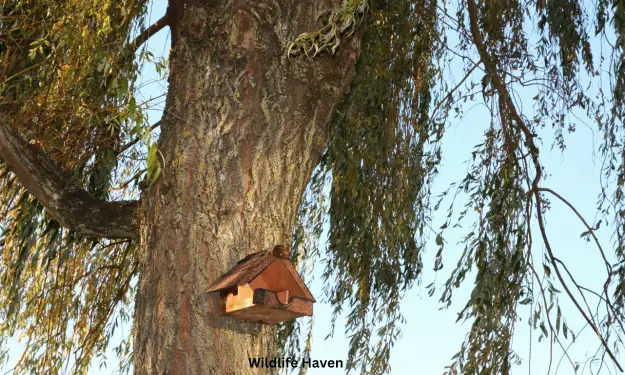
Transform your weeping willow and its surroundings into a haven for local wildlife. These trees naturally attract a variety of birds and small animals, making them an excellent choice for nature enthusiasts.
Landscaping tip: Plant native flowers and shrubs around the base of the tree to provide food and shelter for wildlife. Install bird feeders, baths, and houses to encourage feathered visitors. Create a small brush pile near the tree to provide shelter for small mammals and reptiles.
7. Four-Season Focal Point

While weeping willows are known for their summer beauty, they can be stunning year-round with the right landscaping approach.
Landscaping tip: Plant spring-blooming bulbs like daffodils and tulips around the base of the tree for early color. In summer, add colorful annuals or perennials that thrive in partial shade. For fall interest, incorporate plants with vibrant autumn foliage, such as burning bush or oakleaf hydrangea. In winter, add evergreen shrubs or ornamental grasses to provide structure and texture when the willow’s branches are bare.
8. Riverside Retreat

If you’re fortunate enough to have a river or large stream on your property, a weeping willow can help create a picturesque riverside retreat.
Landscaping tip: Clear a small area near the river and plant your weeping willow. Create a simple pathway leading to a seating area under the tree. Use natural materials like stepping stones or gravel for the path, and place a bench or Adirondack chairs facing the water. Add native riparian plants along the riverbank to prevent erosion and enhance the natural feel.
9. Moonlight Garden

Design a enchanting moonlight garden featuring a weeping willow as the centerpiece. This type of garden is designed to be enjoyed in the evening, with plants and features that shine under moonlight or soft artificial lighting.
Landscaping tip: Surround your weeping willow with plants that have white or light-colored flowers, or silvery foliage that reflects moonlight. Good choices include white roses, silver artemisia, and night-blooming jasmine. Install uplighting at the base of the willow to illuminate its graceful form at night. Add a light-colored gravel path and white garden furniture to complete the moonlit effect.
10. Artist’s Inspiration Point

Create a space that inspires creativity by turning the area around your weeping willow into an outdoor art studio or contemplation spot.
Landscaping tip: Place a comfortable seating area or small pavilion near the tree to provide the best view of the willow and surrounding landscape. Add an easel or writing desk for artistic pursuits. Incorporate elements that stimulate the senses, such as wind chimes, aromatic plants like lavender or herbs, and textured materials in the landscaping.
Caring for Your Weeping Willow
To ensure your weeping willow thrives and continues to be a stunning landscape feature, proper care is essential:
1. Watering: While weeping willows love moisture, they don’t tolerate standing water. Ensure the soil drains well and water deeply during dry spells.
2. Pruning: Regular pruning is crucial to maintain the tree’s shape and health. Remove dead, diseased, or crossing branches in late winter or early spring before new growth begins.
3. Fertilizing: Apply a balanced, slow-release fertilizer in early spring to promote healthy growth.
4. Pest and Disease Management: Monitor your tree regularly for signs of pests or diseases common to willows, such as willow leaf beetles or crown gall. Treat problems promptly to maintain the tree’s health and appearance.
5. Root Management: Be aware that weeping willows have aggressive root systems. Avoid planting them near septic systems, water lines, or building foundations.
Conclusion
Weeping willow trees offer endless possibilities for creating stunning landscape designs.
Whether you’re aiming for a serene waterside scene, a playful children’s area, or an artistic retreat, these versatile trees can help you achieve your vision.
Weeping willows can be used with hardscaping, complimentary plants, and imaginative design concepts to create a landscape that is aesthetically pleasing and specifically customized to your tastes and way of life.
Remember that while weeping willows grow relatively quickly, they take time to reach their full, majestic potential.
Be patient, care for your tree diligently, and watch as it transforms your landscape into a breathtaking outdoor oasis year after year.
References and Further Reading:
- Arbor Day Foundation: Weeping Willow https://www.arborday.org/trees/treeguide/TreeDetail.cfm?ItemID=1080
- Royal Horticultural Society: Salix babylonica (Weeping willow) https://www.rhs.org.uk/plants/11866/salix-babylonica/details




